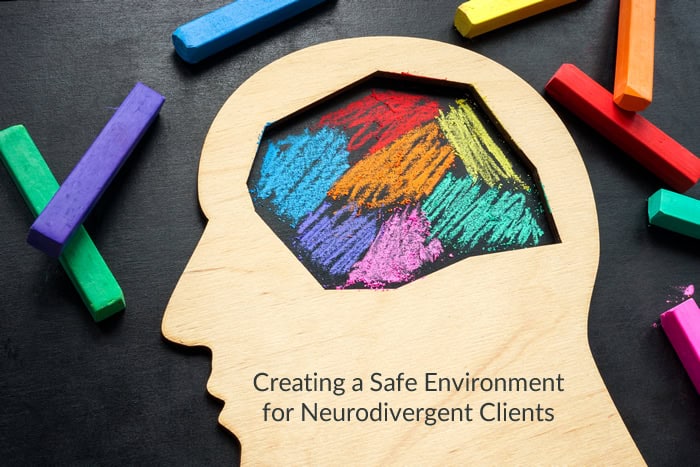

What Does Neurodivergent Mean?
The term neurodivergent describes people whose brain processes in ways that differ from conventional ways. The opposite of neurodivergent is neurotypical, meaning that neurotypical people display behaviors and thought processes deemed normal in society. Neurodivergent people may easily be misunderstood in how neurotypical people view their intentions, words, and actions.
Neurodivergent is not a clinical term because there are no medical criteria checklists established as “normal versus abnormal” brain processes regarding mundane general lifestyle. Accepted norms, ethics, morals, and values all shape how groups of people develop common customs, rituals, laws, rules, regulations, and standards of practices in society.
Judy Singer
The subjectivity of this topic can create intriguing discussions on how the brain functions and integrates sensory stimuli from our environment. The term neurodivergent is credited to an Australian sociologist named Judy Singer in 1998 to recognize that the brain develops uniquely in everyone during childhood and adolescence.
Viewing everyone through a simplistic “this is how you act normal” lens is too elementary when deducing how and why children and teens may develop uniquely. As a result of Singer’s original work, an entire body of research and knowledge has formed allowing clinicians to develop individualized treatment plans for patients based on neurodevelopmental factors.
Differences vs. Deficits
There is a spectrum of neurodivergence to be acknowledged. Some scientists will focus on the deficits of neurodivergent people whereas others will focus on the differences in such individuals. The language used around whether someone is displaying neurological deficits or differences can make a difference in how the neurodivergent individual perceives themselves.
People who recognize their neurodivergent nature in terms of differences rather than deficits tend to be more fulfilled in their lives and careers. This perspective can be healthy for a massage therapist to consider when working with neurodivergent clients.
Neurodivergence is not “preventable,” “treatable,” or “curable” as it is not a medical condition. The term “atypical” is often used to describe the notion that one’s brain processes information in manners which seem different than typically and societally accepted as “normal.”
Effective Communication
Because the term neurodivergent refers to how the brain processes information atypically from expected norms, a neurodivergent person learns how to navigate life through a different lens than neurotypical people. This necessitates that massage therapists show up strongly with active listening and a compassionate approach.
A massage therapist cannot make assumptions about clients in expectations of their knowledge of massage therapy principles and practices. A therapist needs to ensure all clients understand how massage is performed in their practice space. Communicating one’s policies, procedures and directives within the treatment space is key for massage therapists with all clients, especially for our neurodivergent clients.
As a massage therapist speaks to a neurodivergent client, focus on empowerment and self-advocacy when discussing post-massage self-care. Methods that will encourage a client to incorporate self-care means within a daily routine will be quite helpful. This may include helping a client identify feasible times of day and exercises to easily adopt within their schedule. Be open to feedback on how a therapy session can be improved in all respects mentioned.
Active Listening

Massage therapists need to ensure they are listening actively with neurodivergent clients. Allow these clients extra time to express their thoughts and feelings. Avoid value-based labels such as “high or low functioning” when describing a client. Remember that no two neurodivergent people are alike in how their brain processes information so please practice patience as you understand their unique communication style.
Neurodivergent people tend to show higher than average intellect. A massage therapist needs to respect their intelligence and treat such clients with the same dignity and respect as neurotypical clients. Harvard Health Publishing recommends clinicians and therapists adopt neurodiversity which advocates inclusive, nonjudgemental language. A massage therapist is advised to ask a neurodivergent client their preferred language and how they wish to be addressed. (1)
Medical Conditions Potentially Linked with Neurodivergence Brain Activity
Although neurodivergence is not a medical condition, there are medical conditions that may have links with neurodivergence brain activity. (2)
Such conditions include:
• Autism Spectrum Disorder
• Attention Deficit Hyperactivity Disorder
• Bipolar Disorder
• Down Syndrome
• Dyslexia
• General Anxiety Disorders
• Prader-Willi Syndrome
• General Sensory Processing Disorders
• Tourette Syndrome
• Williams Syndrome
3 Ways to Establish a Safe Environment for Neurodivergent Clients
Massage therapists can be sensitive to the unique needs of each neurodivergent individual and allow for accommodations to ensure massage treatments feel safe and effective for such clients.
Here are suggestions to ensure a safe, therapeutic environment when working with neurodivergent clients.
1. Create a sensory-friendly treatment space.
Consider what elements of one’s treatment space could become distracting.
- Excessive furniture and décor can be considered clutter.
- Music with faster tempo and stronger beats, with or without lyrics, can be overstimulating whether in the waiting area or in the treatment room.
- Bright fluorescent lighting can become distracting.
- Scents used in the room can be seen unfavorably.
- Be mindful of textures of linens, blankets, bolsters and towels used during session.
- Weighted blankets may or may not be favored.
Eliminating certain distractions can make the environment more pleasant and less strenuous on a client’s nervous system.
2. Offer moments to pause during sessions to accommodate any need for breaks.

During such breaks, a client may feel the need to regain self-regulation via breathwork, meditation, stretching or simply being still within their body.
3. Provide multiple modes of communication.
- Stuffed animals expressing emotions may work out well.
- Pens and paper available will make written communication possible.
- Drawing a picture of the body and allowing a client to alter the picture to depict areas of pain can be a helpful tool.
- Encouraging using a musical instrument to express emotions may also work well for some neurodivergent clients.
As science learns more about the intricacies of human brain, more research will identify unique differences in neurodevelopment which will guide clinicals and therapists to best practices to support individuals often labeled atypical yet are simply neurodivergent with a different way of expressing themselves and understanding the word.
It will behoove massage therapists to follow one of Stephen Covey’s seven habits of highly effective people: “Seek first to understand than to be understood.” (3)
Recommended Reading:
How Massage Benefits Your Brain
Research Demonstrates Massage Therapy’s Positive Role in Aiding Brain Health











